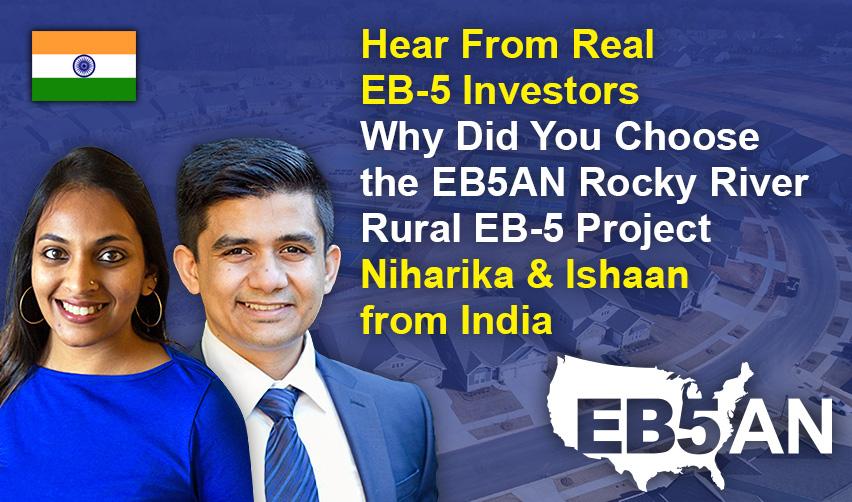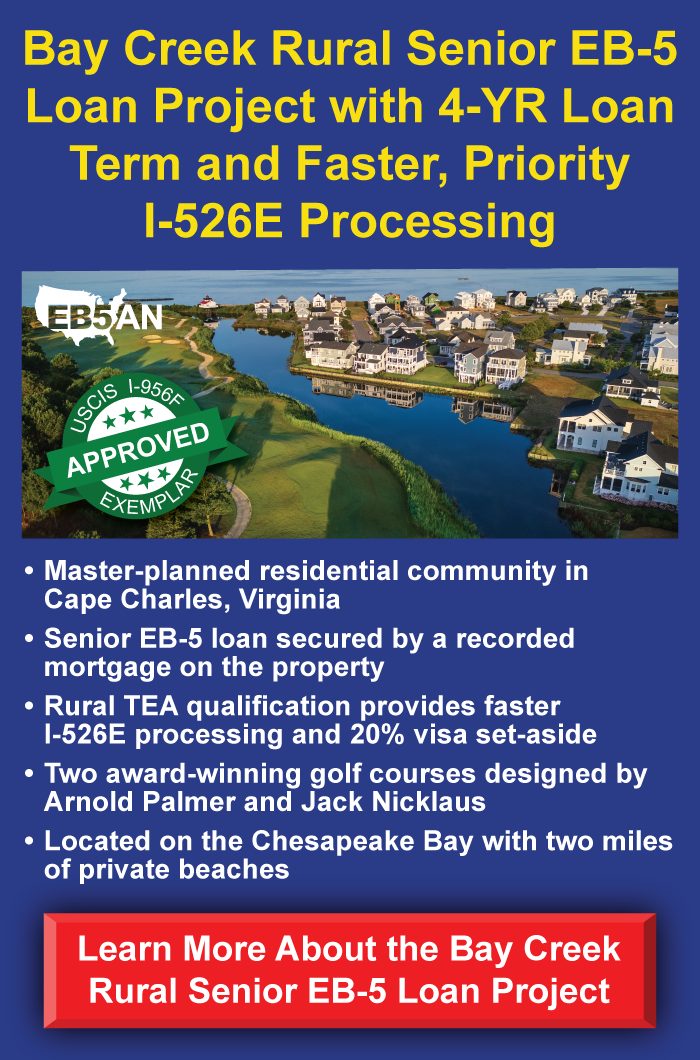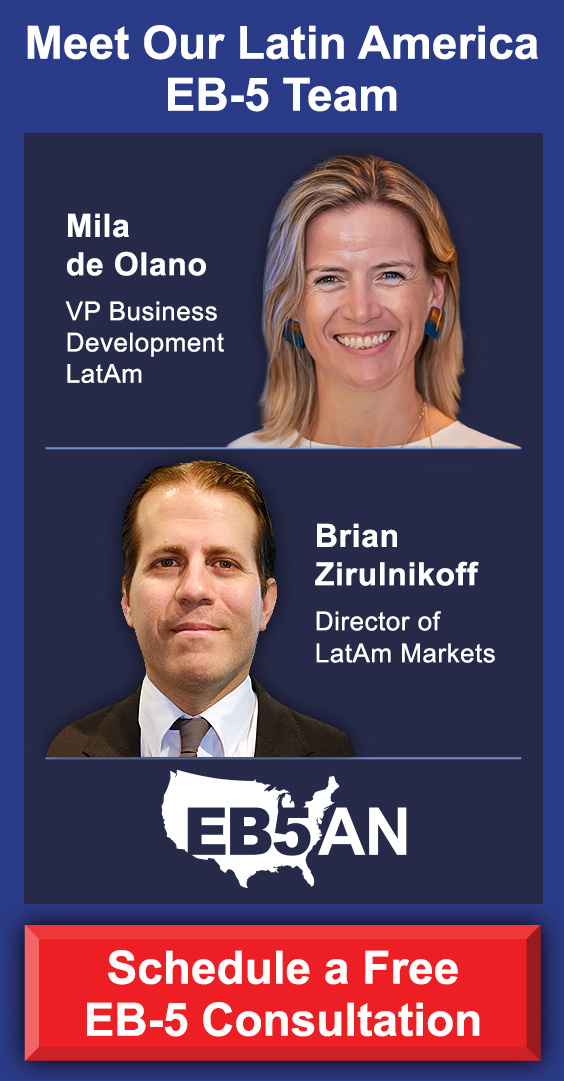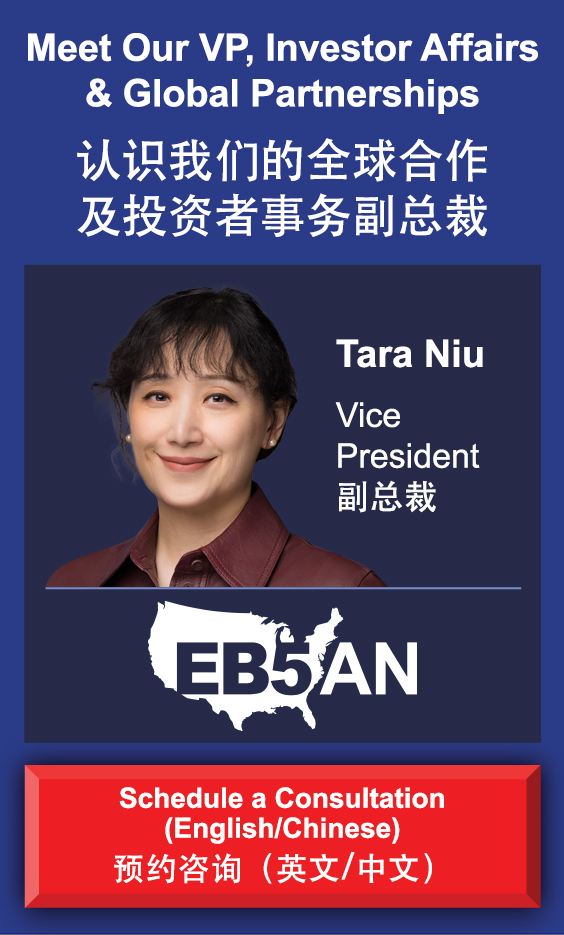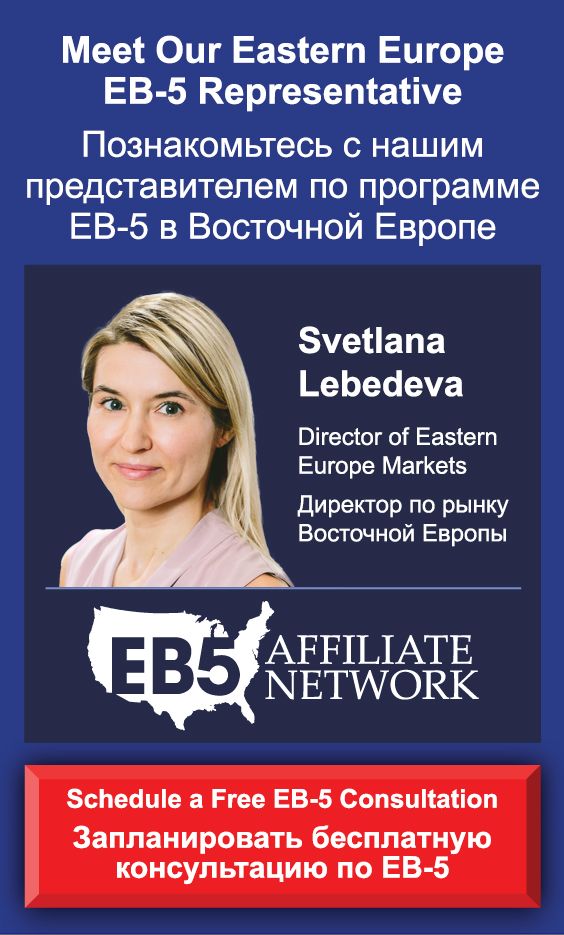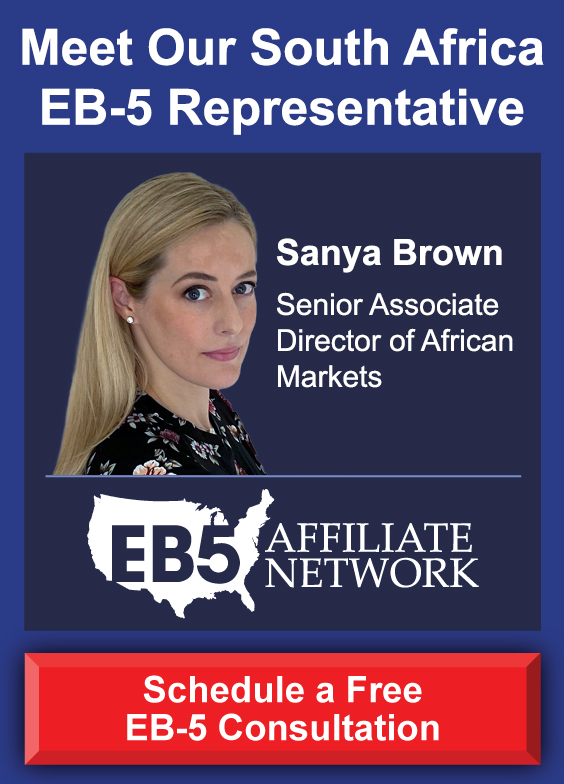We’re Niharika and Ishaan, and we are currently living and working in the United States on H-1B visas. After coming here from India, we quickly decided we wanted to build our long-term careers in the world’s most prosperous economy.
After a long search, we found that the EB-5 program was the best way for us to become permanent residents. And we are very glad to be on the path to our U.S. Green Cards after investing in the Rocky River EB-5 project.
Our guide to making an EB-5 investment will help anyone—especially H-1B workers—interested in quickly obtaining a U.S. Green Card. With enough preparation, the EB-5 process can be straightforward and get you Green Cards in a short time—perhaps the only immigration pathway to the U.S. that offers such a fast timeline.
Watch Niharika’s and Ishaan’s Full Interview
Watch Niharika’s and Ishaan’s Interview Highlights
Our Background and Journey to the United States
Our Decision for the EB-5 Process
Choosing Our EB-5 Attorney
Gathering the Documentation
Our Criteria in Selecting a Project
Experience with EB5AN and Developer Kolter
Working with EB5AN on the Investment Process
Advice for Future EB-5 Investors
Our Background and Journey to the United States
We came to the United States in 2015 on F-1 visas to pursue our master’s degrees. We met while studying at the University of Illinois Urbana-Champaign. Over time, we moved from Chicago to Nashville and eventually settled in San Jose. We have now been here for many years—ten years for one of us—and we continue to work and live in the U.S. on H-1B status while following the EB-2 pathway to a Green Card. Our early years in this country were full of new experiences and challenges. We were eager to learn, work hard, and build our lives here. In our time here, we experienced many ups and downs, which eventually led us to look for a more secure and steady way to stay long term in the U.S.
Our Decision for the EB-5 Process
Our decision to go the EB-5 route came after we weighed the other options available. We saw that the wait times for EB-2 and EB-3 were long. For those born in India, even EB-1 comes with a five- to seven-year backlog. We noticed that many of our friends on H-1B were facing the same challenge. The constant anxiety of waiting for an I-140 approval and tracking visa statuses made us feel unsettled. We wanted a path that would let us live and work anywhere in the country without that constant worry in the back of our minds. With the EB-5 process, we found a route that gave us more control over our future in this country. It was not just about the wait times; it was also about having a way to plan our lives without the uncertainty that comes with the other visa options.
Choosing Our EB-5 Attorney
When we began our EB-5 journey, we started by looking for an attorney who could help us through the source of funds process and guide us on the immigration steps. We first connected with the law firm of Donoso & Partners and their attorney Aarushi Gupta, who is from India. This was not our first time speaking with Donoso, as we had been in touch with them since 2017. Even though we did not choose EB-5 back then and instead went with the H-1B route, our earlier conversations gave us a sense of familiarity and trust.
We wanted an attorney who had handled cases for clients based in the U.S. and who was experienced with the nuances of funds that come from different sources. We needed someone who could help us document where our money came from, especially since most of it was earned income while we were working in the U.S. Our conversations with these lawyers focused on understanding the entire process and making sure we met all the necessary requirements. Finally, we formally engaged with Donoso in January. It took about two and a half months from the time we signed the contract to the time we submitted our immigration petition. That period involved a lot of discussions and careful checks to ensure that everything was in order.
Gathering the Documentation
The I-526E documentation process was a key part of our journey. We knew that a large portion of the EB-5 process involves proving the source of our funds. For us, most of our investment funds came from salary and earned income, so we could trace the money more easily than some others who rely on different income sources. We gathered our salary pay slips, tax returns from the years we have been in the U.S., bank statements, and documents showing our investments and RSUs from our company.
We also had to compile our biographical information, records of our past statuses in the U.S., and even our medical checkup records. One unexpected challenge was the birth certificate. In India, we were used to relying on exam mark sheets and other documents, but for the EB-5 process, the birth certificate proved to be very important. Our attorney helped us understand this requirement, and we made sure to get it in order.
A major part of our documentation was putting together a flowchart. We mapped out where our money came from and how it moved between different accounts. This flowchart made it easier for our lawyer to follow the trail of our funds. With everything organized, the process moved forward much more smoothly. In about two to two and a half months, we had all the documents ready and submitted our petition. This period was intense, but having all our records and a clear chart showing the flow of funds helped reduce the complexity.
Our Criteria in Selecting a Project
As we looked at various investment opportunities, we focused on a few main points. The first point was understanding the capital stack and knowing where the loan would sit in the structure. We had to decide whether the investment was a loan or an equity investment. This decision was important because it affected our position in the capital stack, which in turn played a big role in the overall security of the investment.
We developed a metric to rank each project we looked at. One of the most important criteria was that the project had to be 956F approved. Given that we did not have our EB-2 and EB-3 I-140s approved, we could not take the risk of a future denial. The project also needed to offer enough job cushion to meet the requirements for the EB-5 Green Card. Additionally, we decided that the project had to be rural, which we felt would increase our chances of getting our money back along with our Green Card.
We compared projects across our regional centers. For example, we looked at the ONE Tampa project, which was an urban project. On paper, ONE Tampa had a faster payback period. However, there was an ongoing lawsuit on the minimum repayment period involving IIUSA, and that made us uneasy about linking our repayment to the Green Card process. We felt that the rural project would give us a clearer path to both our investment return and our immigration goals, even if the payback took a bit longer.
In our search, we also considered projects that involved different types of construction. We looked at single-family home projects versus projects in hospitality like hotels or resorts. For us, the risk in hospitality projects seemed higher. The structure of some projects meant that only the first set of houses or units was built and sold based on current demand. This phased approach reduced risk compared to building an entire resort upfront and waiting for the market to absorb all the units. We also considered demographic trends. For housing projects, we looked at the trends of people moving in or out of an area, and for resort projects, we examined tourism trends and seasonal factors.
Experience with EB5AN and Developer Kolter
We found that transparency was very important during our research. One of the key reasons we felt comfortable with our investment was the clear information provided by EB5AN. They shared both the strengths and the risks of the projects in a straightforward manner. Unlike some other regional centers that tried to hide potential downsides, EB5AN made all the project details available online. This allowed us to review the data at our own pace without needing many follow-up calls just to get basic information.
We were able to compare different projects through the data shared. EB5AN provided detailed plans, repayment schedules, and information about past projects. This level of detail gave us confidence as we did our own research. When we compared information available online, we felt more informed and better prepared to make a decision. The transparency in the process was a major factor that helped us choose our investment.
Our research also led us to study Kolter, the developer of the Rocky River project. We began by reading about Kolter once we had shortlisted two or three projects from EB5AN. We looked at Kolter’s history as a construction group and noted that they had been in the business for several decades. Their track record showed that they had delivered a large number of successful projects over the past 20 to 30 years. This made us feel that they were a well-established company with a lot of experience.
Kolter’s ability to handle tough market situations also played a role in our decision. We saw that they managed to come through the financial crisis in 2008 and the strains caused by COVID. This history reassured us that Kolter had the strength to complete the project despite external challenges. Additionally, we compared Kolter’s documents with our own research on the North Carolina market. We found that the local trends in population movement and housing demand matched what Kolter had projected. This independent validation made us feel even more secure in our decision to invest in the Rocky River project.
Working with EB5AN on the Investment Process
Once we made our decision to invest in the Rocky River project, our next step was to work closely with the EB5AN team. The process from deciding to invest to transferring our funds was very quick. We put in our $800,000 investment within a week. Ahmed from EB5AN sent us the subscription documents right away. We reviewed the documents and had our lawyer check them before signing. After we signed the documents, we sent over our payment along with the necessary paperwork. Within 48 hours, our lawyers received all the documents they needed from the regional center side.
Our interactions with EB5AN went beyond just the document transfer. We had several sessions with them to understand the finer details of the EB-5 process and to learn more about the project. These sessions were very helpful in answering our questions and making sure we fully understood the project structure, the expected cash flows, and the long-term goals of the project. The team’s readiness to explain every aspect made us feel more confident. We learned not only about the specifics of the Rocky River project but also about how the overall EB-5 process works.
The approach taken by EB5AN was different from our experience with other regional centers. While some teams focused on pushing us to sign quickly, EB5AN took the time to educate us. They provided clear answers to our questions and even helped us understand what questions we should be asking. This educational approach made us feel respected and well-informed, rather than rushed into a decision.
Advice for Future EB-5 Investors
For anyone considering the EB-5 path, we have a few pieces of advice based on our own experience. First, understand that choosing the EB-5 process is a personal decision. Our choice was driven by the long wait times for other visa categories and the need to secure our future in the U.S. If you are facing similar challenges on an H-1B or another visa, EB-5 might be a good option for you.
One of the first things we recommend is to have an initial call with a knowledgeable representative like Ahmed Khan from EB5AN. Our first 30-minute conversation with him was very eye-opening. It helped us understand the key terms such as capital stack, equity, loan structures, and the overall process of EB-5. During that call, we also learned about the impact of changes in the process after the RIA ruling, and the differences between urban and rural set-aside visas. This initial conversation was very important in building our foundation of knowledge.
We also suggest reading a book that clearly explains the EB-5 process. We found “The Essential EB-5 Investor’s Guide” by Dilip Parmeswaran to be very helpful. The book walked us through the various stages of the process and explained the technical terms in a way that was easy to understand. It clarified many points that were initially confusing, such as why certain investors who applied before 2022 still did not have their Green Cards. The book helped us grasp the fundamentals and gave us the confidence to proceed.
It is also very important to talk to as many people as you can who have gone through the process. In the first 30 days, we talked to many investors and learned from their experiences. Every conversation helped us understand what to look for in a project and what criteria were most important. We learned that every investor’s situation is different, and the advice you receive should be weighed against your own needs and circumstances. Take everything you hear with a pinch of salt and analyze it carefully.
Another piece of advice is to start early. The process of gathering information, meeting with different regional centers, and understanding the documentation can be overwhelming at first. We spent around two and a half months just to finalize our investment decision and complete the documentation. Even though it felt like a long time, every day brought more clarity and confidence. Starting early gives you the time to absorb all the details without feeling rushed.
We also learned the importance of a clear and organized approach. Making a flowchart of where your funds come from and how they move can simplify the process for your lawyer. This small step can save a lot of time and avoid confusion later. It helps to see all the information laid out clearly before you submit your documents. In our case, the flowchart played a key role in expediting the legal process.
Working with EB5AN and the Donoso Law Firm
Based on our experience, we would recommend both our immigration attorney and the EB5AN team to other investors. Our law firm, Donoso, has been involved in this space for several years. We had spoken to Aarushi from Donoso in the past, and that long-term relationship made us feel confident in her expertise. She understood our unique situation and helped us clear our doubts step by step. Working with someone who is experienced in cases similar to ours is very important in a process as complex as EB-5.
We also highly recommend the team at EB5AN. From the start of our investment journey to the transfer of funds and document submission, their process was straightforward and quick. We appreciated the transparency they maintained. Unlike some other regional centers that left us guessing about project risks, EB5AN laid everything out in clear and simple terms. Their detailed online materials gave us a good understanding of the project and its risks without the need for repeated follow-up calls.
The EB5AN team made it clear that they were not just interested in closing a deal. They took the time to educate us on every step of the process and to explain the nuances of each project. Their approach helped us learn more about the EB-5 process in general. We found that this educational approach was very beneficial. It gave us the confidence to ask the right questions and to know what to expect in the future.
In our experience, having clear communication and transparency was the most important part of the process. EB5AN provided us with detailed project plans, repayment information, and a full explanation of the risks involved. We did not feel pressured to make a quick decision. Instead, we had the time to understand every detail and to build a solid plan for our future in the U.S. The support we received was consistent and reliable, and it helped us feel more secure about our investment.
Our work with EB5AN also showed us the value of dealing with established and experienced partners. The information they shared helped us make an informed decision about the project and about our long-term plans. Their transparency, combined with the strong track record of the developer Kolter, made us confident that we had chosen the right path for both our investment and our immigration needs. We believe that such a clear and open process is essential for anyone going through the EB-5 journey.

